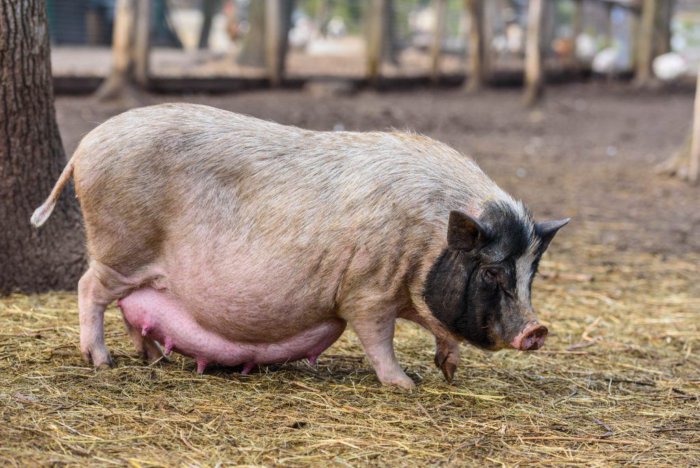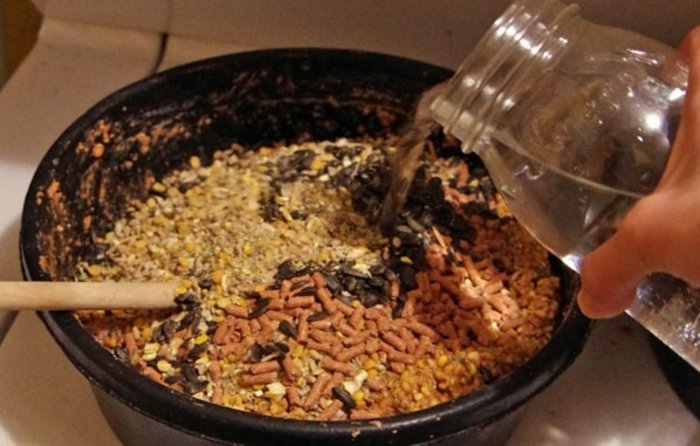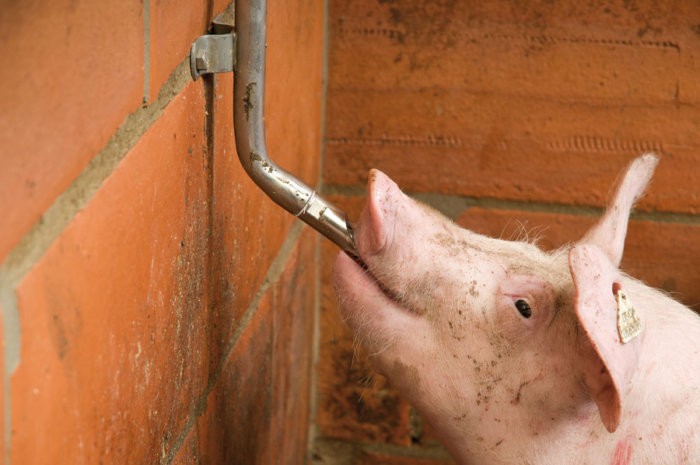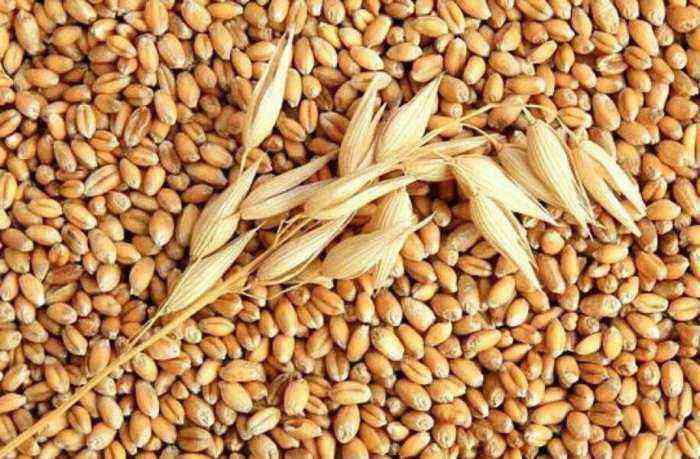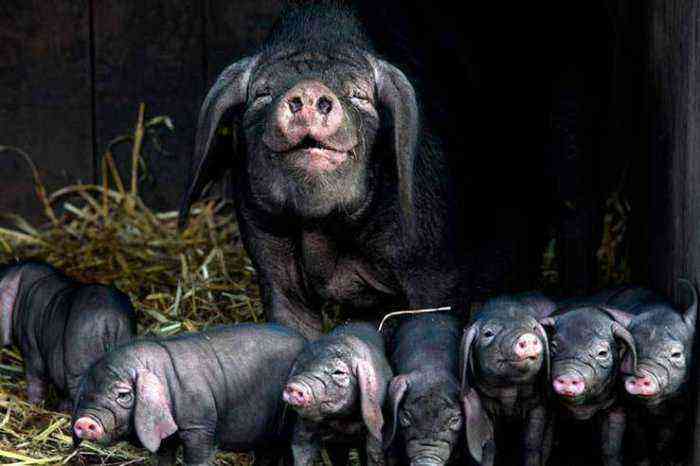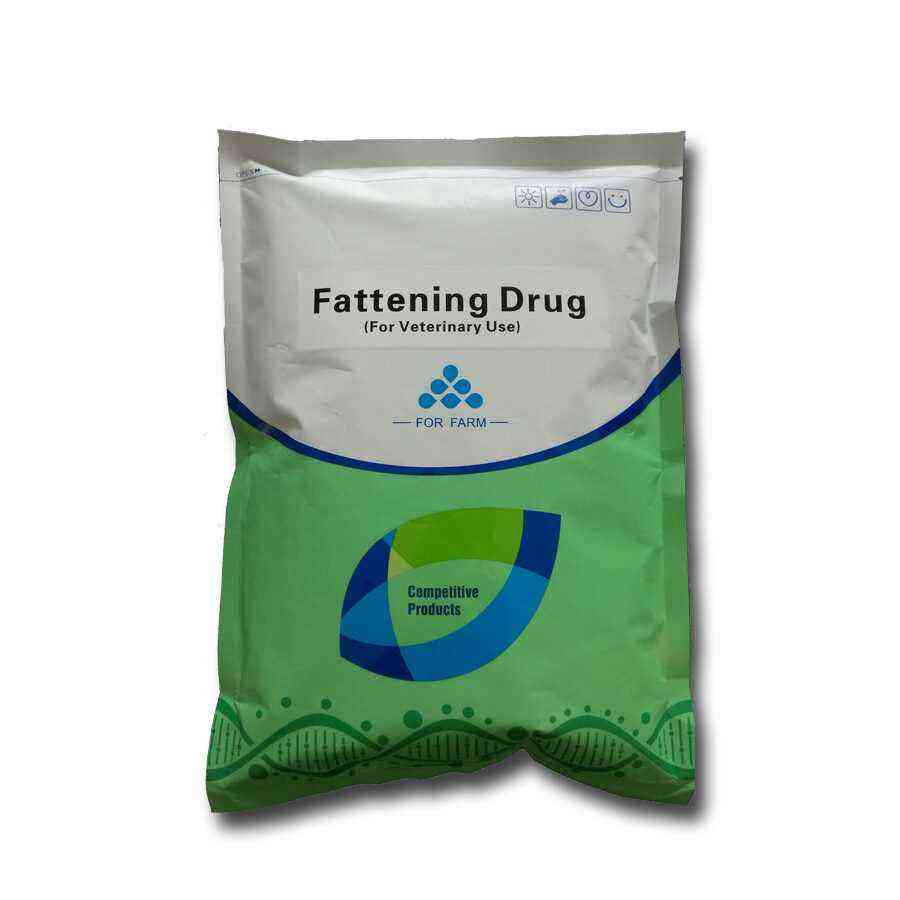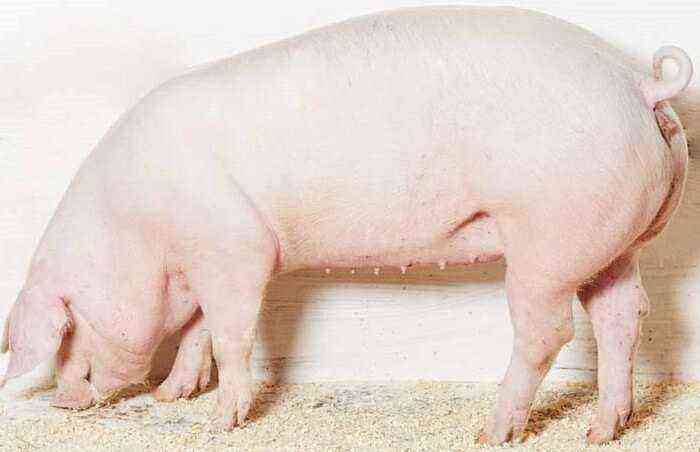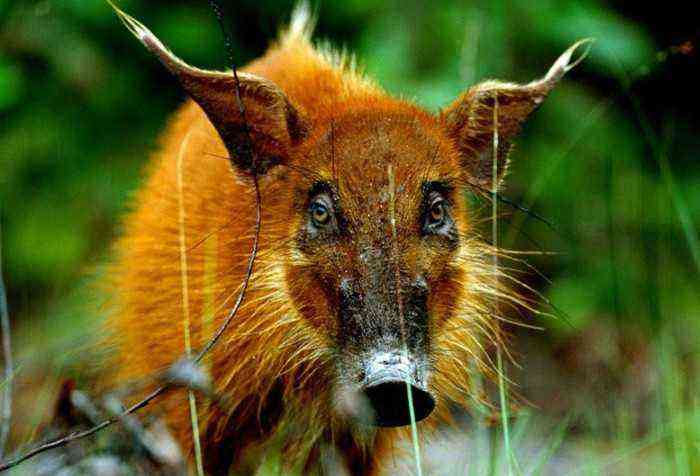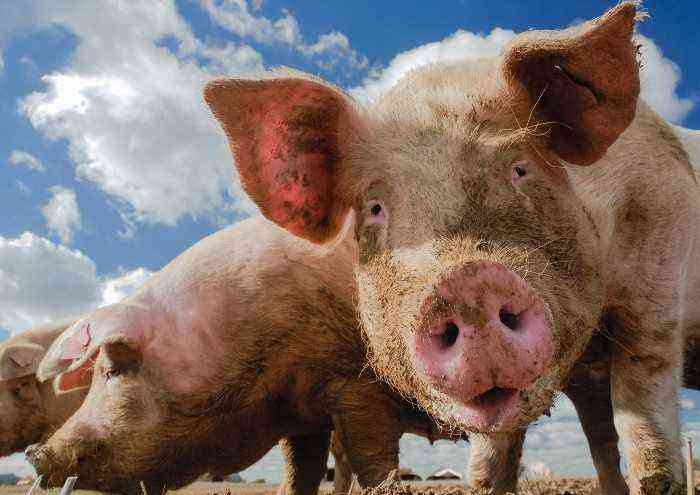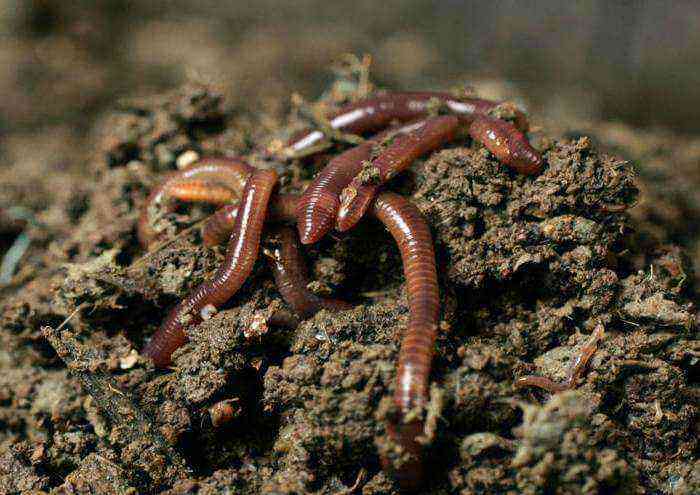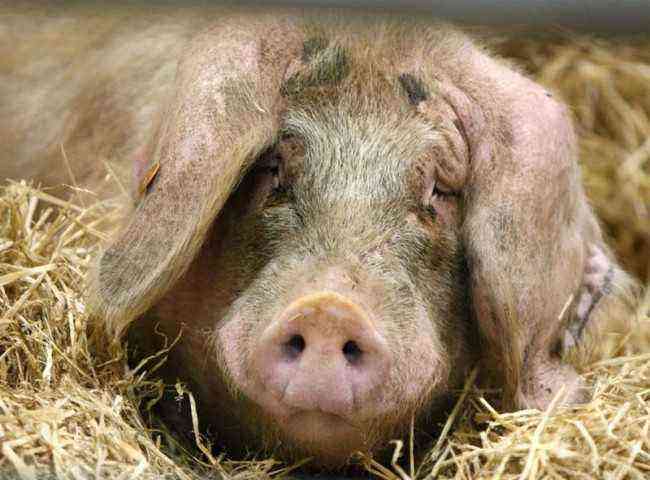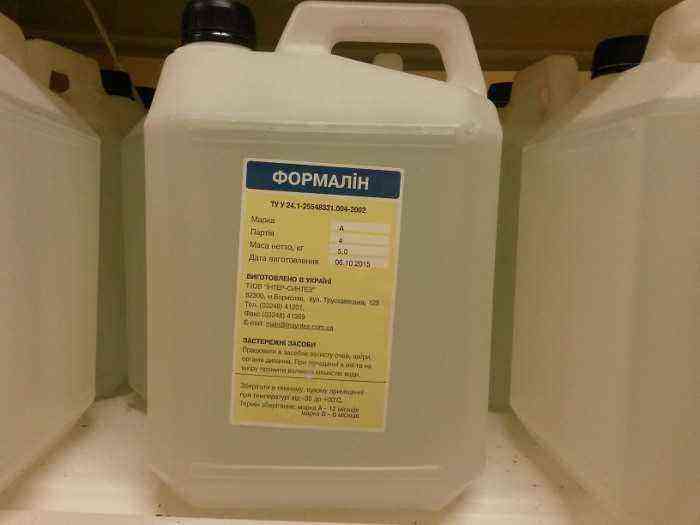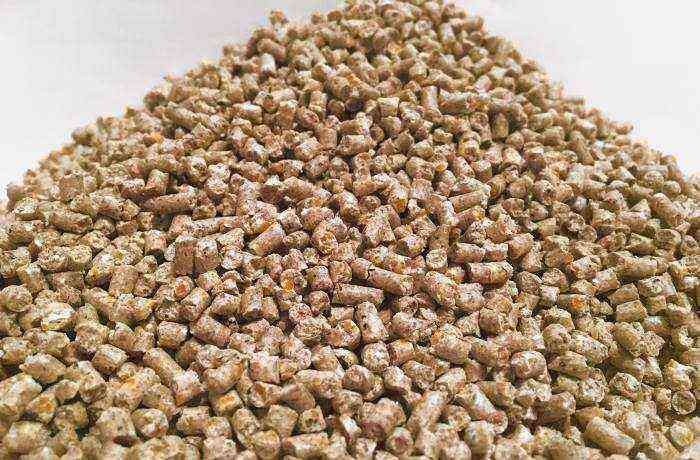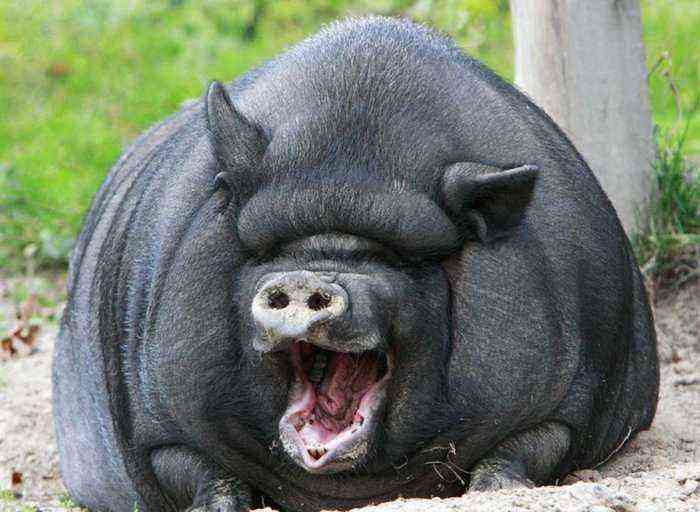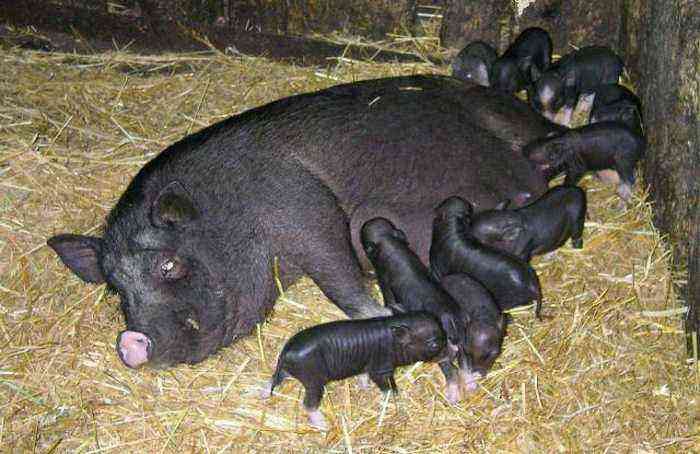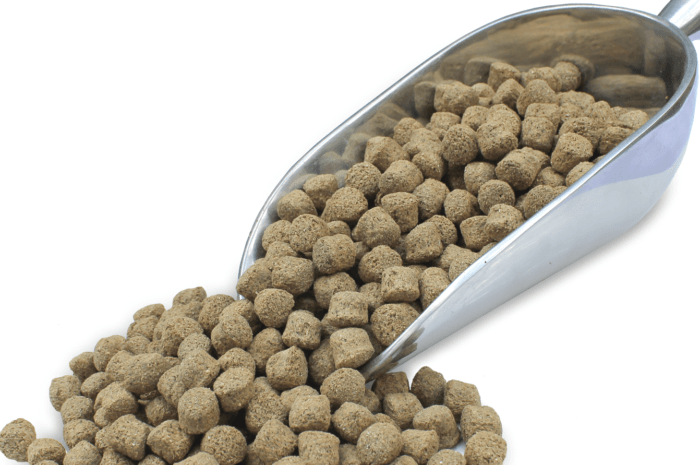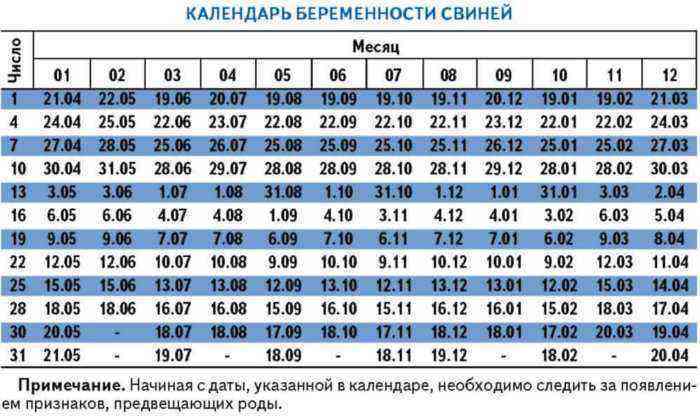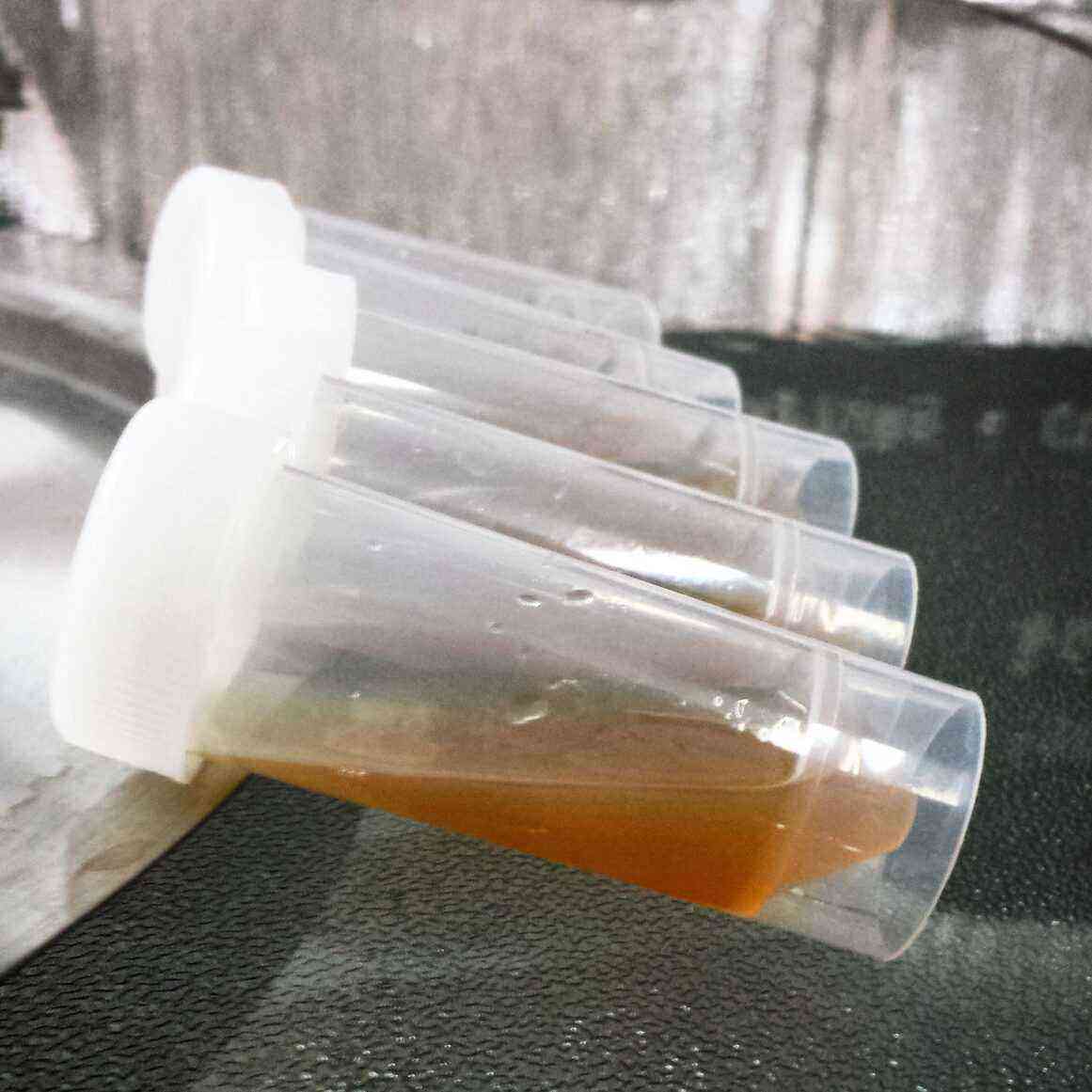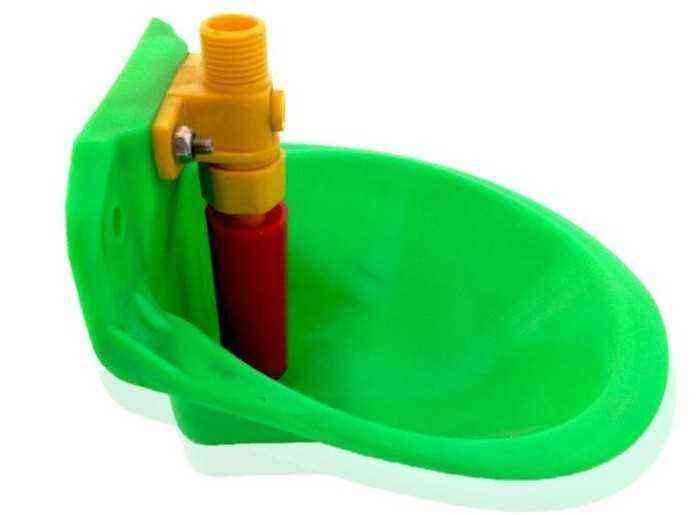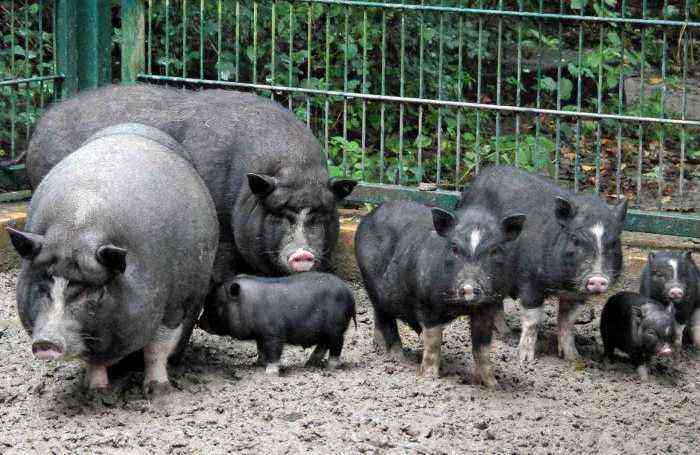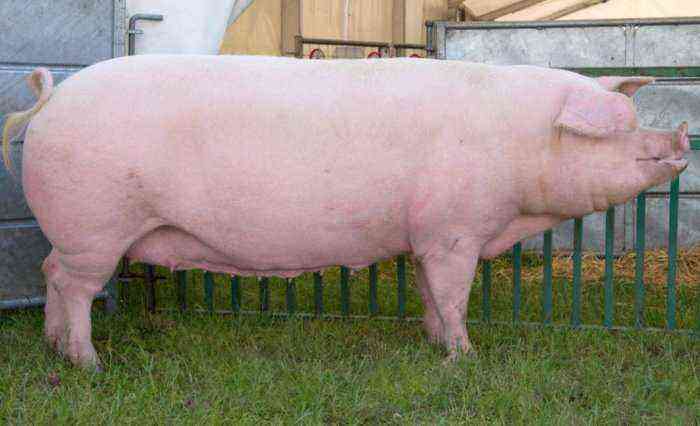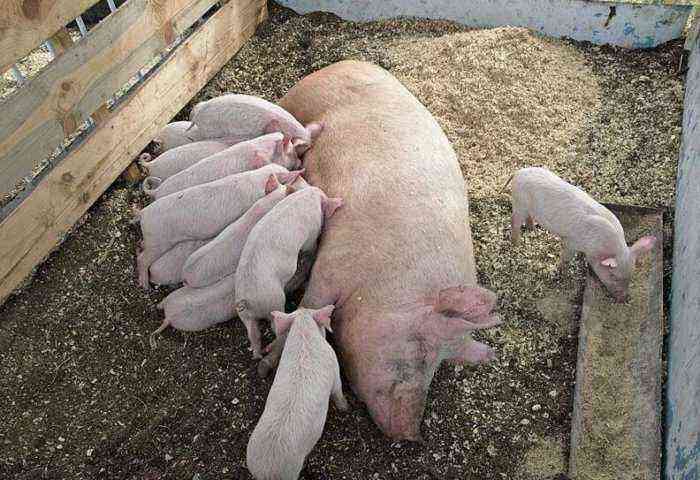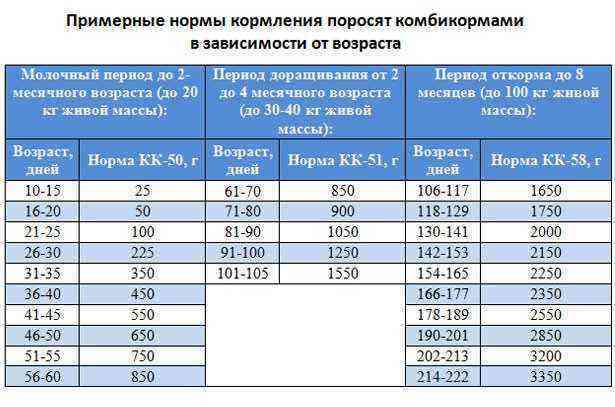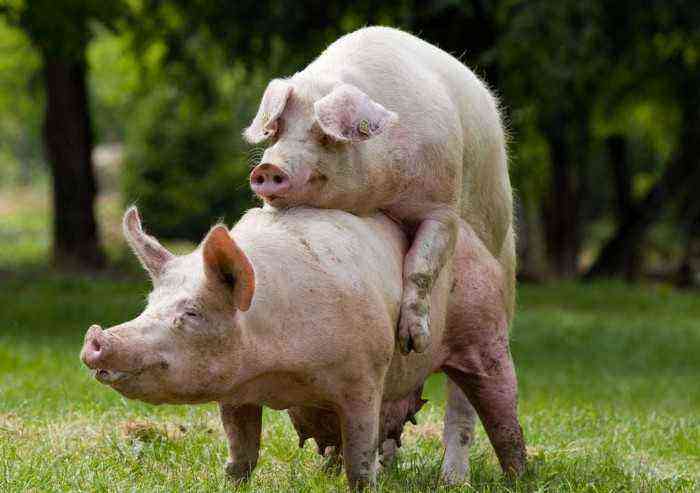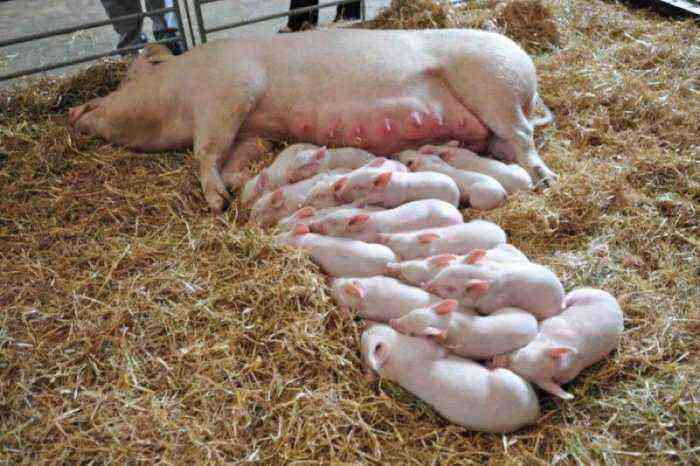It is no secret that all farm animals require special care during pregnancy and rearing. And one of the most important points in this regard is proper feeding. Pigs are no exception. Properly planned feeding of sows allows you to maintain their health and the health of the fetus, increase the fertility of the animal. At the same time, it is extremely important to select a diet depending on the specific productive phase of the pig and taking into account the accepted daily norms.
Diet of sows
Production phase periods
The entire breeding process of pigs takes place in several productive phases, which cover the period from the conception of a sow to the feeding of young animals. There are three main phases:
- Fertilization. This phase usually takes 5 days or more. It begins as soon as the young are taken away from the uterus prepared for mating. Ends with successful insemination.
- Pregnancy. The second phase lasts for 115-120 days. It ends with farrowing.
- Feeding. The lactation period of the female lasts about 28 days after farrowing.
Each of these periods requires compliance with certain moments in feeding. In addition, the characteristics of the diet also depend on the nature of the course of each of the phases. Such moments must be taken into account.
Fertilization
After weaning the babies, the sow’s estrus begins again after about 6 days. During this period, the animal is fed either in the same way as during the dry period, or the amount of food given is increased to 4-4,5 kg per day. Moreover, most of the specified norm is compound feed. The increased volume of concentrates will provide the animal with energy, which is necessary for faster fertilization and successful conception.
As soon as the first signs of successful fertilization are traced in the animal, the amount of combined feed in its diet is reduced to 2,5 kg per day. In addition, for the next 5 weeks, the uterus is provided with a special regime of maintenance, which involves:
- feeding sows with exceptionally high-quality fresh food, there are no signs of rot, mold, and souring on it;
- providing the animal with rest and excluding any sharp noises, movements of intense lighting in the place where the animal is kept;
- normalization of the intake of minerals and vitamins in the body, the exclusion of their excess and deficiency.
Attention! Failure to comply with each of these points can lead to improper attachment of the fetal egg to the uterus of the pig. This, in turn, affects the health and vitality of the fetus.
Also, in no case should the sow become obese. It negatively affects the size of the future litter.
Pregnancy
The entire period of the next phase is divided into two more stages, in accordance with which the animal’s diet is built. The first of these is called low-pregnancy. It lasts from 1 to 12 weeks of pregnancy of the uterus. At this time, lactation in the animal has already stopped, and the fetus is still at the stage of formation and does not require an abundant supply of nutrients. Therefore, the pig eats, basically, only to meet the needs of its body.
Low-pregnant females are fed small portions
Low pregnant females are fed in small portions. At the same time, the diet of animals includes a minimum of concentrates and more fiber. The latter helps the pig get enough faster.
Approximately, from the 13th week, the highly pregnant stage begins. It lasts until the 16th week of pregnancy. At this time, the fetus requires much more energy and nutrients, as it grows more intensively. To meet this need, the amount of food for the uterus is gradually increased.
The sow menu for the entire gestation period includes the following components:
- grain mixtures and waste resulting from grain processing;
- hay flour;
- pumpkins, zucchini, melons;
- potatoes and other root crops;
- milk products;
- meat industry waste.
It is worth noting that if the uterus is young and becomes pregnant for the first time, then in addition to the growth of the embryo, its body also grows. Accordingly, the daily feed intake must be increased. They do this by eating foods rich in protein. But, too much protein should not be given either, as this threatens the death of the fetus.
In general, for the entire period of gestation, the sow should gain weight by 40-45 kg. Of these, only 15 is an additional weight gain of the animal. Everything else is the mass of the growing fruit. If the animal is still growing, then normal growth will be 25-30% more.
These values will help you more accurately control the recommended weight of livestock and avoid obesity. Excess weight in a pig during pregnancy is fraught with the following complications:
- complications during childbirth;
- the death of young animals as a result of suffocation when it gets under the body of the uterus;
- decreased appetite during lactation;
- fertility decline.
If the animal, nevertheless, shows signs of excessive weight, it is provided with more walks and other physical activity.
Pregnant sow on a walk
But you should not overly limit living creatures in food. If the uterus does not fill the reserves before the onset of the lactation period, then it will not be able to fully feed the offspring. In addition, increased energy consumption for milk production without proper reserves will also affect the health of the pig.
Lactation
In the final productive phase, the sow’s need for nutrients and energy increases by 3 times. If there are a large number of piglets in the litter, which are distinguished by their large weight, then this figure increases even more.
On average, one animal produces from 7 to 10 kg of milk per day. Accordingly, to cover the volume of wasted energy, protein and minerals, it is necessary to use more highly nutritious compound feed.
But the normal consumption of food by the female is possible only under the following conditions:
- the feed is of high quality and normal hygienic condition;
- the temperature in the place of detention does not exceed 18 degrees;
- there was enough fiber in the diet of the sow not during the gestation period;
- during pregnancy, the uterus was not overfed.
If these points are not observed, the uterus may lack appetite. If the animal refuses to eat the entire specified amount of food, then its nutritional value is increased to the desired value due to additional components. These include fodder oil, which is added in an amount of at least 1-3% of the total food volume. Also, fishmeal is introduced into the diet in the amount of 2%.
In general, during lactation, the daily feed intake for an animal is increased from 2,5 to 6-7 kg. More specific values are calculated based on such values: at least 1,5 kg of food is consumed per lactating female, and 0,4-0,5 kg of food per piglet.
Feed and water requirements for sows
Feeding rates for females also depend on the specific productive phase. At the same time, they have approximately the following meanings:
- during the dry period, the female should receive 1,5-1,8 feed units of food for each centner of mass (up to 3 maximum per individual);
- the first 84 days after successful fertilization, food volumes are raised to 2,3 feed units per pig;
- further, the rate is increased to 3,2 feed units;
- a couple of days before the expected farrowing, livestock are fed only 1,7-2 feed units;
- for pregnant sows, the initial volume of food is 2,2 feed units and gradually increases with the growth of the young.
It is worth noting that feeding lactating sows has its own nuances. In the first couple of hours after birth, the animal is given only warm fresh water. A few hours later, he is fed a liquid mash of concentrates, the volume of which is 0,7 kg. In the course of further feeding, this value is increased to a kilogram and further, up to the standard norm.
Mix for sow
For suckling sows, the menu includes exclusively concentrates and compound feed. In the gestation phase, in addition to concentrated feed, foods rich in fiber are also added to the diet. These include:
- beets;
- forbs;
- silage;
- straw.
The average rate of roughage per pregnant sow per day reaches 4 kg. Over time, its amount is reduced, while increasing the amount of feed. A couple of days before childbirth, its amount is reduced to 2-2,5 kg.
Important! For sows with a litter size of 12 piglets, feed ad libitum.
Be sure to remember that it is impossible to feed livestock with one combined feed at all productive stages. It is selected individually according to the composition. Most often, the following three types are used:
- Combined feed for sows during pregnancy. It contains a lot of fiber and nutrients. But at the same time, the percentage of amino acids and minerals is minimal. This composition contains 10,5 J of energy, 110-140 g of protein, 80 g of fiber.
- Compound feed used as a supplement to the main diet of the pregnant uterus. In fact, its composition is the same as in the previous type of feed. The difference is only in less fiber. With an energy value of 13 J, it is only 40 g in dry matter.
- Compound feed for lactation. In such a mixture, the amount of minerals, amino acids and energy is much higher. Its energy value is 12,5 J. The amount of fiber is 50 g, and protein – from 160 to 180 g.
Whatever food is used in feeding, it is important to remember that its composition and taste cannot be changed dramatically. This will lead to digestive problems, reduced milk production, and loss of appetite in animals.
When feeding queens with compound feed alone, its daily norms will be as follows:
- from 1 to 12 weeks of pregnancy – up to 2,3 kg;
- from 12 weeks to childbirth – 3-3,3 kg;
- a few days before farrowing – 1-1,5 kg;
- during the feeding period in the presence of 8 piglets – 4,8 kg;
- in the presence of 12 piglets – 6,1 kg;
- in the period of withdrawal – 5 kg.
Water requirement
Also, an obligatory moment of maintaining good health and well-being of the animal is the presence of a plentiful amount of drink. Approximate rates of fluid intake for animals weighing from 120 to 220 kg are as follows:
- for low-pregnancy females and queens in the idle period – at least 8-10 liters per day;
- for sows in the high-pregnancy period – from 10 to 15 liters of liquid;
- for animals for the lactation period – 15 liters per female and about 1,5 liters per piglet per day.
In the absence of sufficient water, the animal may lose its appetite. In addition, pig milk is 85% liquid. Therefore, in its absence, the amount of colostrum also falls.
Drinker for pigs
Feeding methods
For the period of mating, gestation and lactation, there are two main schemes for feeding livestock:
- Combined.
- Feeding exclusively feed.
Each of these schemes involves a number of its features and the period in which it is used.
Combined feeding
This method is applicable during the gestation of the animal. It involves the use of basic feed without pre-processing. Such meals include:
- silage;
- quality hay;
- greenery;
- root crops (in limited quantities).
Here the main role is played by the quality of the products used. Silage should not be rotten or fermented. Hay is chosen dry, but without dust. Fresh grass is dried a little in the sun, but it is not allowed to get very hot.
Important! With such feeding, combined formulations are used only as a supplement. At the same time, when purchasing or producing such mixtures, components with a high fiber content are completely excluded from them.
Feeding
The basis of the used compound feeds includes finely chopped hay, wheat bran, cereal straw, pulp, rich in fiber. This type of feeding is most often used in industrial livestock complexes. It provides the body of living creatures with nutrients, and due to the sufficient amount of fiber in the uterus, saturation can be traced after consuming a small amount of food.
Proper feeding of a sow requires certain knowledge, experience and financial costs from the owner of the animal. But only if it is implemented, it makes sense to talk about maintaining the health of the pig in the process of pregnancy, as well as the birth of healthy offspring. Therefore, to facilitate the process, specific feeding rates have been developed in different phases of uterine productivity. And, based on them, any farmer will be able to provide proper care for his queens.

